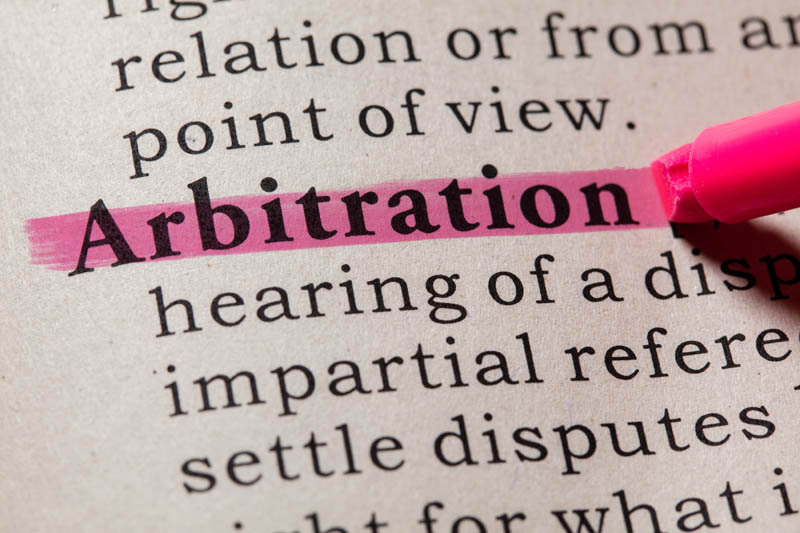Schedule a Consultation: 858.483.9200
San Diego Business Contracts: Tips for Ensuring Enforceability of Arbitration Provision
A stand-alone arbitration agreement or an arbitration provision contained within a larger agreement is a useful technique for managing downside risk associated with litigation. Lawsuits are expensive and time-consuming. Admittedly, arbitration is not exactly cheap, but arbitration is definitely less expensive than litigation. Arbitration is expected to — and does — take less time and there are no costly appeals. Appealing an arbitration award is generally not allowed and, if allowed, appeal can be based only on a few very limited and narrow bases such as “the arbitrator had a conflict of interest” or some equivalent fraud in the process.
So, arbitration provisions and agreements are good for potentially saving money with respect to future litigation. But, at the same time, they are scrutinized carefully by California courts since arbitration supplants the use of traditional courts. The scrutiny is heightened if there are any factors that might suggest an imbalance in the bargaining power between the two sides. Examples here include consumer contracts (service and product) and employment contracts. Thus, it is important to draft the arbitration agreements/provisions in a manner to withstand the judicial scrutiny. A good San Diego corporate attorney can accomplish the task. Here are some tips.
- Make the mandatory arbitration provision/agreement conspicuous
- Decide if the mandatory arbitration should be a stand-alone agreement or incorporated into a larger agreement — see discussion below
- If the arbitration will not cover all disputes/claims, make sure the list of covered disputes/claims is broad enough for your purposes
- Include a provision specifically stating that the validity of the arbitration agreement is for the Arbitrator to decide — not the courts
- Get a signature on the whole agreement — with online agreements, browswrap is not enough; further, do not rely on a click, for example; require the user to “sign” by typing in his/her name in a box
- Get a signature near or under words like the following: “I have read the foregoing arbitration agreement [or provision], I understand that I am agreeing to arbitration, and I agree to be bound by the arbitration agreement.”
- Get an initial on the arbitration page if the arbitration provision is contained in a larger agreement
- Include a class action waiver — this will save your company a lot in legal fees and judgments
- Ensure that the Arbitrator is neutral and that the location is neutral and reasonably local
- Be cautious with other limitations beyond the class action waiver such as caps on damages, limits on what relief can be sought, etc. — if the courts decide the agreement is wildly unfair, then the whole agreement can be thrown out; too many limits increase the “unfairness” factor
- Include a severability clause that allows for the remainder of the contract to be valid even if the arbitration provision is stricken
- Include a claims-severability clause that allows the arbitration clause to remain valid even if a court were to decide that certain claims — such a sexual harassment — are not subject to arbitration
- Make a decision about and include provisions with respect to who pays — usually as between businesses, the costs of the Arbitrator’s fees are shared; however, with other types of arbitration California law now regulates/caps who pays for the arbitration; cost is another factor in the “fairness” question
Following these tips will increase the chances that your arbitration agreement/provision will be enforced by California courts.
There are a couple of important issues to consider on the question of stand-alone agreement versus arbitration clause within a larger agreement. The most common challenge to an arbitration agreement is something like “I did not agree to it” or “I did not know I was agreeing to arbitrate.” This is the reason that an arbitration provision must be conspicuous and that it is important to get a signature. Those both defeat the challenge of “I did not agree.” A stand-alone arbitration agreement is another way to defeat the challenge of “I did not agree” because a stand-alone agreement is, by definition, conspicuous and requires a separate signature. The main disadvantage is that the arbitration agreement does not get properly “linked” to the main agreement that you want arbitrated (like an employment contract or a technology license) or, that over time, there is a drift between the two. If the arbitration clause is in a larger agreement, then the language is something like “the parties agree to arbitrate all claims related to this Agreement …” Future modifications and changes to “this Agreement” will automatically carry forward the arbitration provision. Sometimes that is not the case if the main agreement is separate from the arbitration agreement. What if, ten years in the future, the name of the main agreement is changed? Does the arbitration agreement still apply? One possible solution is to make the stand-alone arbitration agreement an Exhibit to the larger agreement. But make sure the arbitration agreement gets signed.
Call San Diego Corporate Law Today
For more information, call corporate attorney Michael Leonard, Esq., of San Diego Corporate Law. Mr. Leonard’s law practice is focused on business, transactional, and corporate matters. Call Mr. Leonard at (858) 483-9200 or contact him via email. Like us on Facebook.
You Might Also Like:
Outlining the Parameters of a Contractual Restraint on Trade
San Diego Class Action Lawsuits: Arbitration and Enforceable Contractual Waivers
Dynamex and Grubhub: San Diego Employee or Independent Contract
Can Mandatory Arbitration be Avoided if the Underlying Contract is Illegal?






